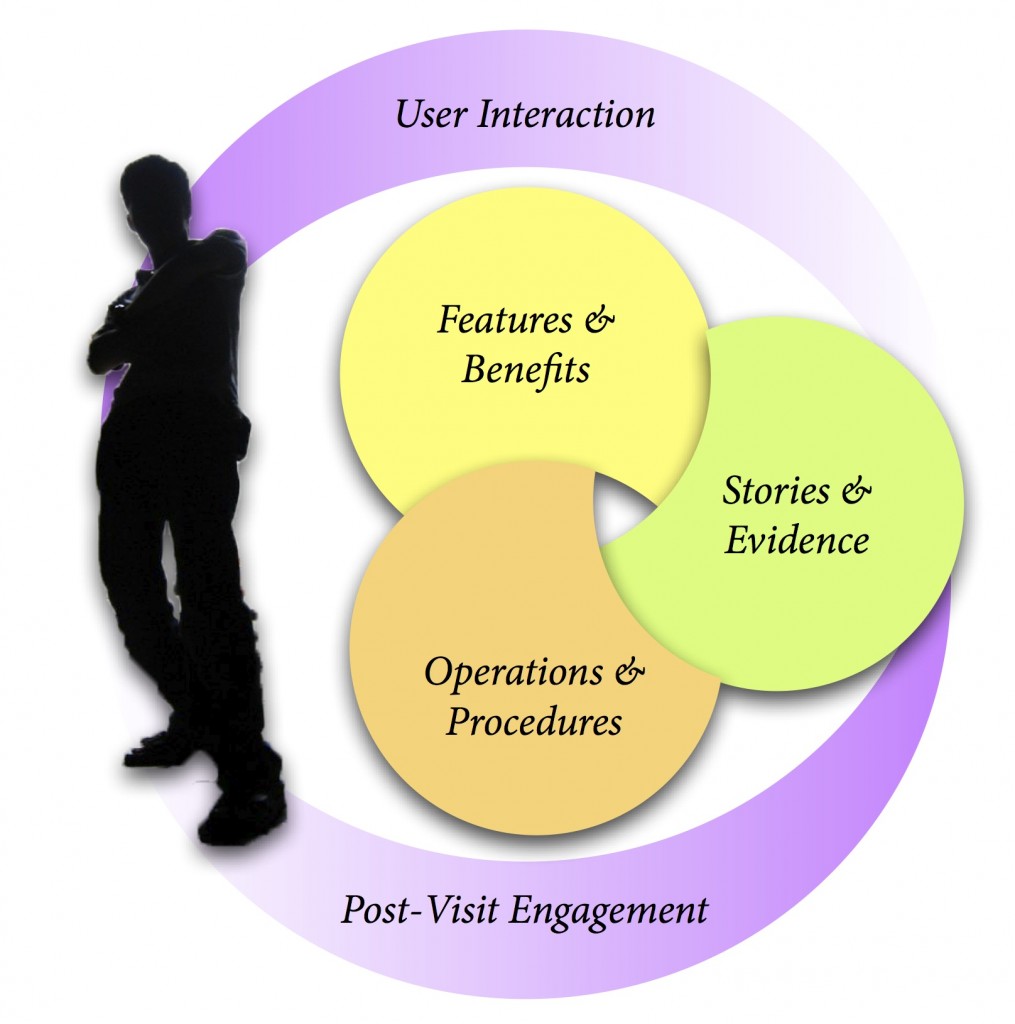I no longer have a dog in this race, but in cleaning up my hard drive of old files I’ve run across a few items of note. For example, the above illustration I once used to describe the different content, audiences, and uses of a university website.
Current students, prospective students, their family, faculty, employees, and their family all use and expect to get answers from the website. Websites for large organizations fail their users when they only share the details that they once exposed in view books and catalogs. Prospects expect more information, and they demand more interactivity. Meanwhile, efforts to create those brochure sites often ignore the operational challenges their users face. Prospects need to apply and sign up for tours, students need to plan their academic careers, the university wants to make it easy for alums to stay connected and donate, and the differentiation between those audiences isn’t as clear as it at first appears. The systems that support the many activities of a university’s varied users are often the first experiences for an outside user and strongly contribute to those users’ first impressions. Despite this, those systems often betray their antiquity and history as systems facing experience internal staff and look nothing like the systems that prospective students have come to expect from their experience using Facebook and other sites.
Rounding out the content are stories from the users themselves. These aren’t the stories from the shiny brochure, these stories are told by students, faculty, and others in their own voice; this is their work shared online. This content that prospects will turn to once they get through the brochure. Interactivity while on the site — admissions applications, question and answer services, schedule and degree planners, billing tools, and others — along with ongoing engagement with users after they leave the site tie everything together. The services might be provided by a dozen different offices using two dozen different systems, but the user is having one experience.
Designing that experience is a huge undertaking, and no small risk. The university that succeeds in that wins.
